Beast Mode
Raider / Beast Signer
So far, nearly all of Cornwall's games have been RPGs in varying degrees of completion, with the exception of his two similarly unfinished shmups. This isn't surprising when you understand that he grew up playing
However, he wasn't a one note chef; he was quite willing to branch out into other genres.
Platformers, for instance.
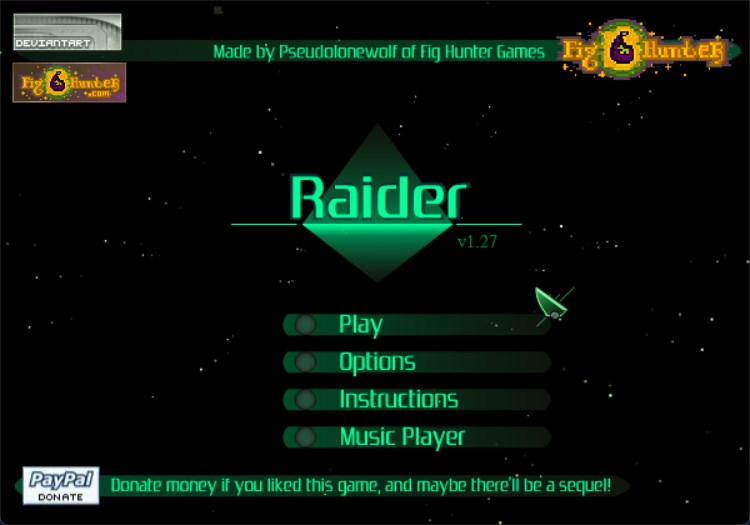
In 2006, he released Raider (later retitled Raider Zero), his first platformer.
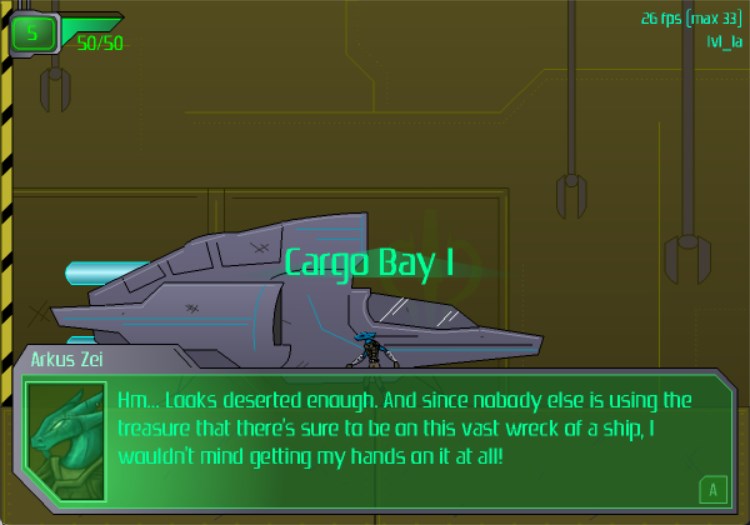
You play as Arkus Zei, a bounty hunter who comes across an abandoned spaceship and immediately decides to scour it for any treasures it may have. Armed with a laser sword and a blaster, he sets out to devastate what's left of the ship's security.
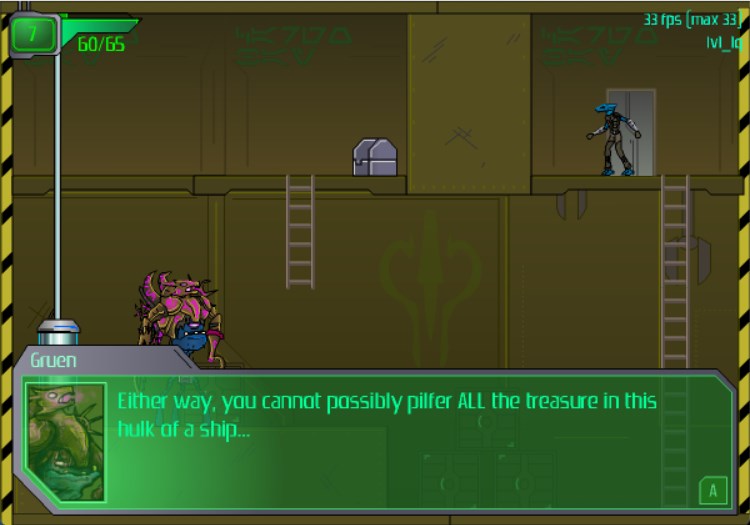
He's not alone, however. A fellow treasure hunter has somehow gotten onto the ship before him. Fortunately for him, he has no interest in getting in his way.
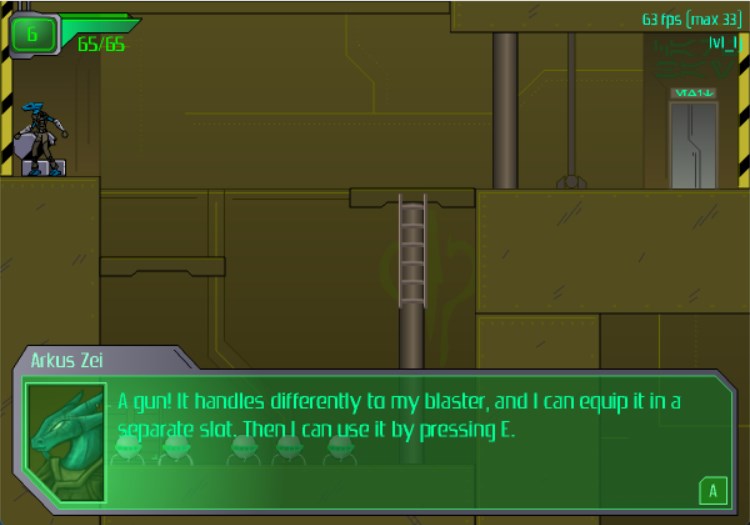
While it's one of Cornwall's relatively few action-based games, he simply could not resist inserting RPG elements into the gameplay. You can gain EXP, level up and increase your stats, as well as equip weapons and armor with different stats, but the only improvement in my fighting ability that I've noticed is my ability to take hits.

The game started to get on my nerves around the sewer level anyway, so I stopped playing.
This brings us to Beast Signer, released in 2008.
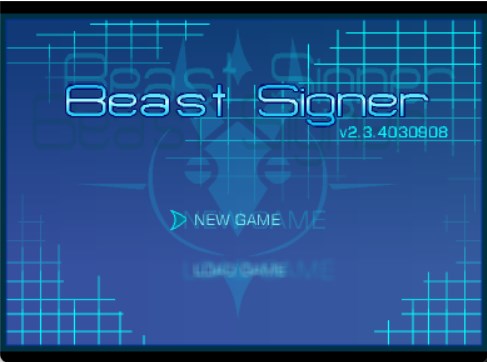
It's yet another RPG, but instead of being inspired by Final Fantasy, it's inspired by Pokemon. You'd think that, after making several RPGs with a similar formula over the past several years, that he would have learned a few things from the experience, right?

In a first for him, creating your character in this game doesn't involve allocating stat points or anything like that, but rather answering a personality test. There are 20 questions in total, and after the first five or so, I started to miss the barebones character creation of Deliverance. At least that didn't feel like a job application. And at least, despite the low resolution, the game didn't use bright blue text on a blue background.
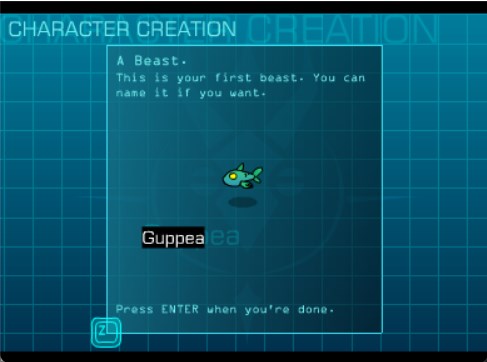
For whatever reason, I get the water element and something called a "Guppea."
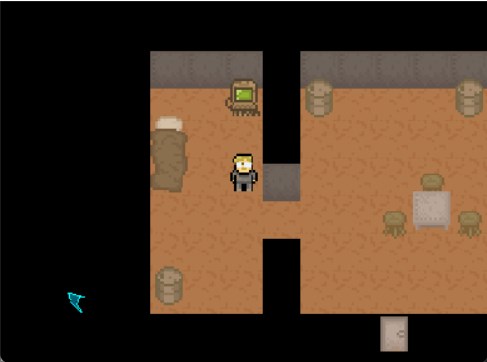
The game starts you out in a house that looks surprisingly bare, even for a Pokemon knockoff. The moment you step out, it becomes obvious why; the game is set in the distant aftermath of a global nuclear war.
But if the town is in such a state that even the roads are in a drastic state of disrepair, then how is it that your house has a working computer with Internet access? Never mind the needed infrastructure, it's a wonder that the community even has electricity.
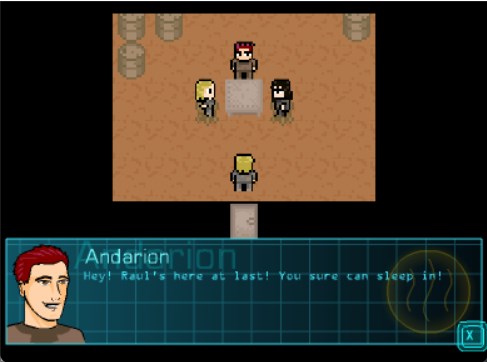
You have three friends, which I don't particularly care about. From what I've seen, their only purpose is to make the sameface problem that these games have more obvious.
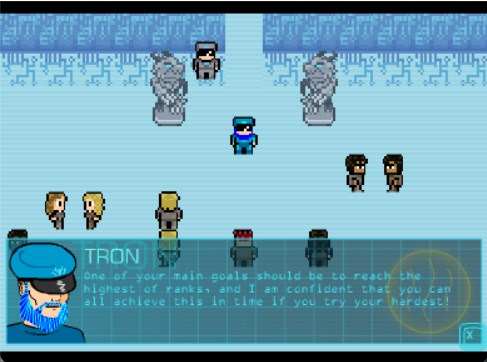
You know how you get an elemental affinity assigned to you at the start of the game? Well, every other character and monster has one too. The same was true in Deliverance, as well.
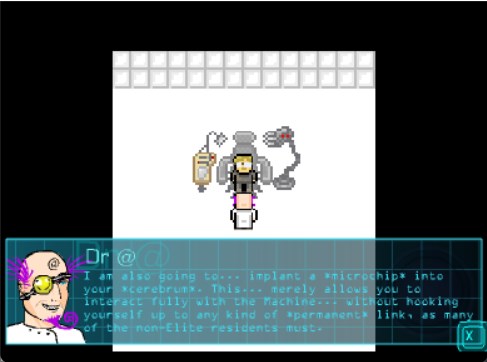
First off, how do you pronounce this guy's name? Some of the NPCs outside mentioned a Dr. Madde, which is obviously not how the @ symbol is pronounced. Was this a last-minute change?
Second of all, our character is getting a brain chip in order get connected to the virtual world?

The hub runs on this augmented reality tech, which is connected to a number of virtual worlds accessible through portals.
So on top of being Pokemon, it's post-apocalyptic Digimon crossed with .hack set in the metaverse, got it.

With that, we get our first mission: some monster is causing trouble in one of the worlds connected to the main hub, so go over there and sort it out.
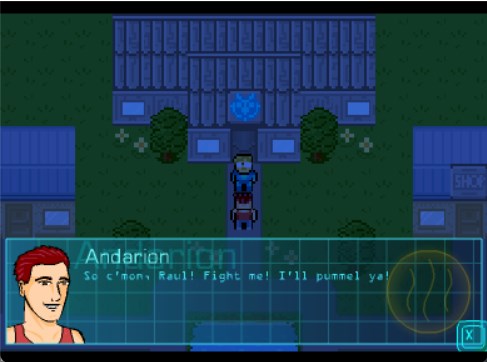
The moment you set foot in the virtual world, one of your friends challenges you to a Beastmon or whatever battle.
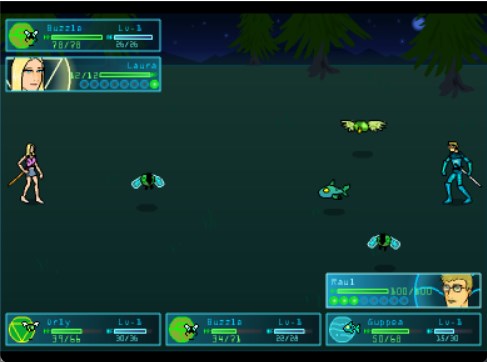
I would say that this game predicted Triple Battles from Gen V... at least, if Dragon Quest Monsters didn't do it years before, though.
Now to explain how combat works.
Each monster in this game has a primary and a secondary element. Although our starting monster seems to be a pure water element, in actuality, this is due to both its primary and secondary elements being the same. There are six different elements: fire, water, earth, air, light and dark. Fire beats air, air beats earth, earth beats water, and water beats fire, and light and dark beat each other.
On top of having a regular physical attack, each monster has up to two different "soulstrikes" powered by each of its elements, as well as a "status strike" which inflicts a different status effect depending on the monster, and a number of special attacks that use up MP. There are also moves that buff each of its stats, but I never used them.
In every battle, your trainer can act separately from the monsters, with the option to summon, use an item on them, or, during wild encounters, "sign" a monster to add it to your team.
When you defeat all of the opposing trainer's beasts, the battle isn't over yet. In perhaps the biggest departure from the Pokemon formula, you need to take out the trainer to win. Due to this, both you and every single opponent trainer are armed with swords, which can do quite a bit of damage to your mons, especially early on. It makes you wonder why we're even bothering with collecting beasts, when you can just hit them with swords and be done with it.
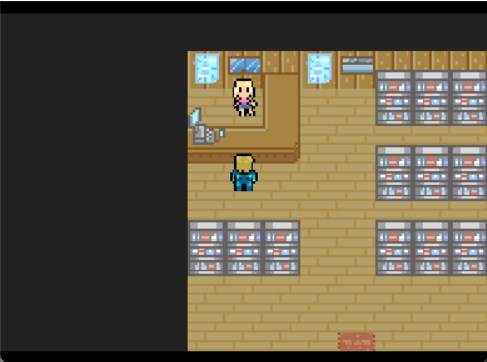
While you're out brutalizing enemy trainers, don't forget to buy items at the shop, which looks exactly like a shop from the Pokemon games!
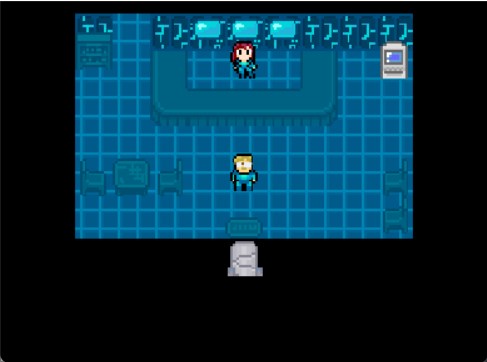
And then you head over to this place, which is set up, practically tile for tile, like a Pokemon Center. But you can't actually talk to the person at the counter; you need to go to the computer to heal your mons.
By the way, there's a glitch where whenever you buy something from the shop, you can't open the menu until you use the computer here.
Those are far from the only elements directly lifted from the Pokemon games.

We have not-Viridian Forest, complete with the requisite bug 'mons.
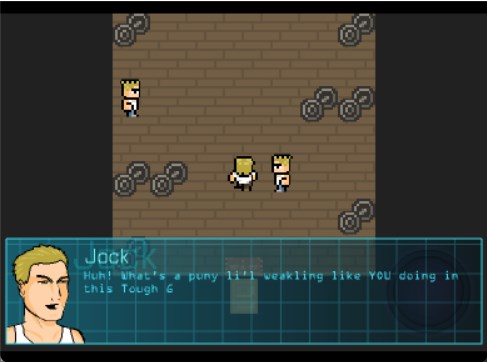
Then in the next town over, we have not-Brock's gym.
Even if the trainers there weren't overleveled, there's still no need for us to go here. The game is so unfinished that it's likely that the game won't even acknowledge that you challenged this gym.
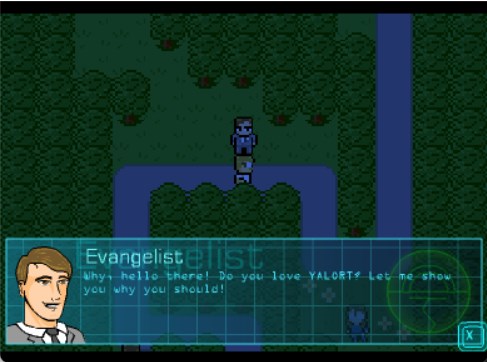
Even in this blatant knockoff, completely divorced from the swords and sorcery of most of his previous games, he simply could not resist having someone preach the word of Yalort in the game's setting.
You go through a cave that's actually called the Annoying Cave, but despite its name, there's nothing really annoying about it; you just have to fight a bunch of trainers on your way through.
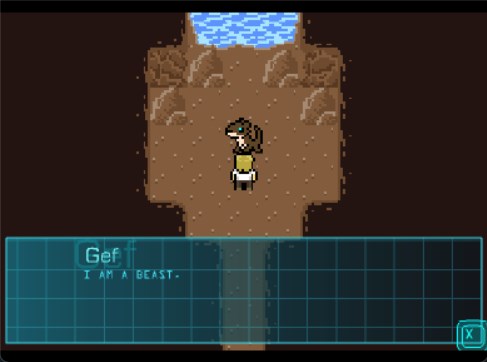
And there's the target of our mission. You can just murder it and be on your merry way, but, like in Pokemon, you have the option of just adding it to your team instead.
With our mission completed, it's time to head back to headquarters.
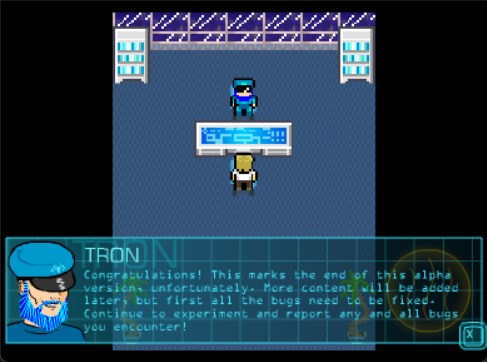
Spoiler alert: none of the bugs get fixed, and he never returns to this game again. He did intend on eventually making it into a sort of single player MMO with the option for a paid account, which would be far too ambitious at this point. However, around the same time that he was developing this, he was also working on something that could be the culmination of what he learned from years of development.